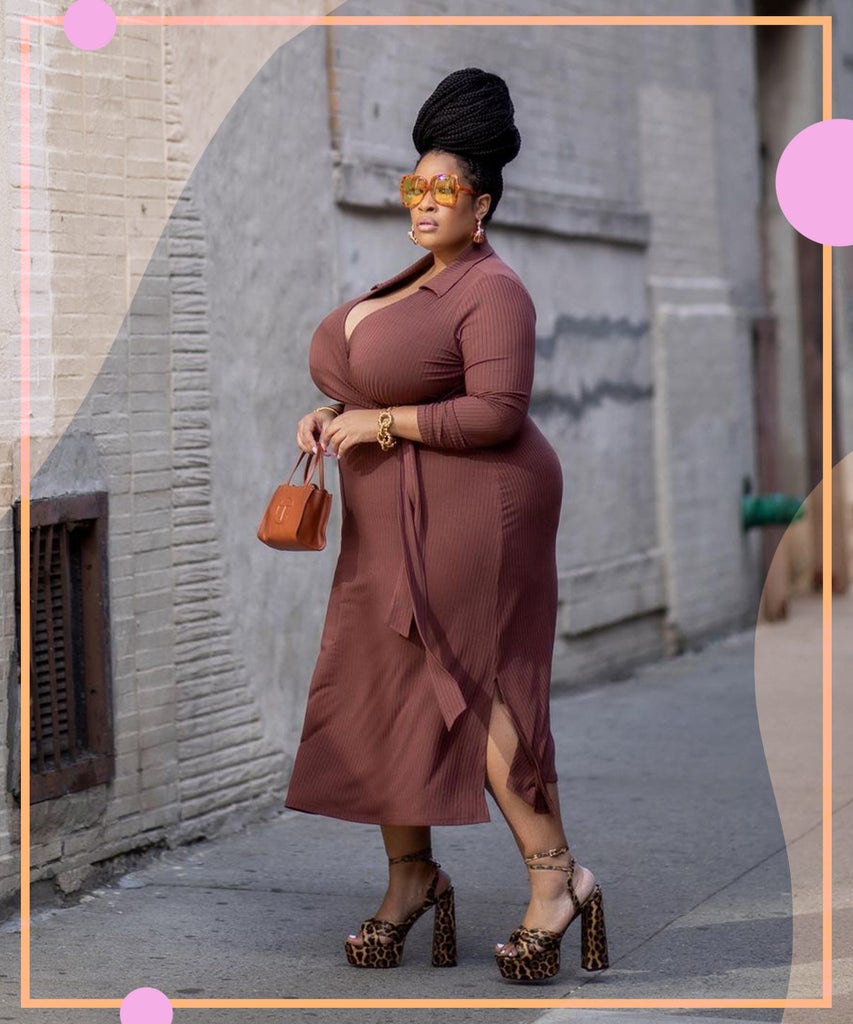
In April, Katie Sturino, the founder of beauty brand Megababe and author of Body Talk, and Nicolette Mason, a fashion blogger, were so fed up with luxury fashion’s long-practiced exclusion of anyone above a size 16 — that is, 67% of all women in the U.S. — that they decided to do something about it. For their collective 805,000 Instagram followers, the two launched a social media campaign, #FatBabesInLuxury. Their goal was to start a conversation around the lack of representation — and shoppable clothing options — in the luxury fashion space. Because while plus-size and size-inclusive lines are on the rise, representation in the highest echelons of fashion’s hierarchy remains few and far between.
For proof, see last year: While 2020 saw wins like Dutch model Jill Kortleve becoming the first plus-size model to walk in a Chanel fashion show in a decade and in Fendi’s history (a title she shared with Paloma Elsesser), as well as Versace sending three curve models down its runway, overall, luxury brands have been slow to accept size inclusivity. According to The Fashion Spot, only 46 plus-size models were selected out of 6,879 models cast for Fall 2020 and 34 (out of 2,293) for Spring 2021 shows during last year’s Fashion Months.
“I love fancy bags, shoes, & clothes (when they’re available in my size),” Sturino wrote on Instagram beneath an image of herself wearing a Lele Sadoughi headband and clutching a Chanel purse. “But it seems like season after season, we see brands like Dior, Louis Vuitton, Chanel working almost exclusively with thin models, influencers & ambassadors, which results in a strong message that plus bodies are NOT included in the vision of luxury.”
Mason took to her own Instagram account. “I believe that representation, to an extent, can shift the way people view themselves — and each other,” she wrote in a concurrent post alongside pictures of her posing with a Louis Vuitton handbag and Miu Miu sunglasses. “That being seen & shown as beautiful, luxurious, worthy of investment — that that helps people see, appreciate, and believe in their own beauty. That they deserve. That they belong. That there is possibility.”
Both then called on their followers to flood the hashtag with images of themselves wearing whatever it is that they deem luxurious. The result? Almost 900 posts, many of which were accompanied by moving personal stories, as well as pleas for representation and inclusivity in designer fashion.
“When I think of #FatBabesInLuxury, I think of access,” says fashion writer and creator Lydia Okello, who posted a photo of themself with body-positive slow-fashion activist Marielle Elizabeth using the hashtag. “I’ve worked in fashion for about 16 years, and I’ve seen the way that fat bodies have been left out.” Moving forward, Okello hopes to see luxury designers finally realize that bigger customers are no less deserving of high-end goods. “We have taste, personality, and style,” they say. According to Okello, being plus-size doesn’t change the underlying desires that keep the wheels of fashion in motion: “We want what everyone wants: to feel beautiful, special, and exciting in our clothes.”
“We are so often denied the finer things in life, or excluded from luxury, that we have to make a freaking hashtag to celebrate when we are able to.”
Lynley Eilers, Plus-size model
Plus-size model Lynley Eilers agrees: “We want access to clothing, like everyone else; access to experiences, like everyone else,” she says. “It’s plain and simple: fat women want what everyone else has — we just want it in our size!” Unfortunately, according to her, fatphobia, as it stands today, is too deeply embedded into society — fashion especially. When one designer comes out with garments for larger customers, it’s cause for celebration — even though it should just be the status quo. “We are so often denied the finer things in life, or excluded from luxury, that we have to make a freaking hashtag to celebrate when we are able to,” Eilers says.
For influencers Essie Golden and Gregoria Reyes-Lou (Greivy), the hashtag has become an escape from the thousands of luxury ads they’re bombarded with each day, hardly any of which are representative of them or people who look like them. “#FatBabesInLuxury is the representation that I don’t see in the media, but I do see in my everyday life,” Golden tells Refinery29. “I enjoy scrolling through that hashtag and seeing so many beautiful plus-size people looking incredible in their [luxury-to-them] pieces.” According to Greivy, it created a way for people like her to connect and share their love of style that’s elevated. “It’s for people who seek inspiration outside of what society claims a luxurious person should look like and be,” she says.
#FatBabesInLuxury is about more than pressuring designers to make their pieces in larger sizes. It’s a movement geared at pushing the luxury space to include larger bodies in ad campaigns, shows, and editorials. “Our society and the industry doesn’t deem fat women worthy of the finer things,” Eilers says. And they won’t until people get used to seeing designer labels on a full range of bodies.
“Luxury fashion is selling a visual of someone who they believe is aspirational,” says Sturino, “but only in one form.” This campaign was meant to force luxury brands to see past their old definition of beauty and join the rest of the world. Sounding a brighter note, Sturino says the bulk of society has evolved and is, in many ways, very inclusive. Unfortunately, in the two months since she called on luxury brands to step up for plus-size shoppers, according to Sturino, not one has reached out to the activist to discuss opportunities for change.
Like what you see? How about some more R29 goodness, right here?
The Difference Between Plus-Size & Size-Inclusive
Fashion Needs Plus-SIze Education
25 Plus-Size Shops That Aren’t Fast Fashion
from Refinery29 https://ift.tt/35JvV03
via IFTTT
